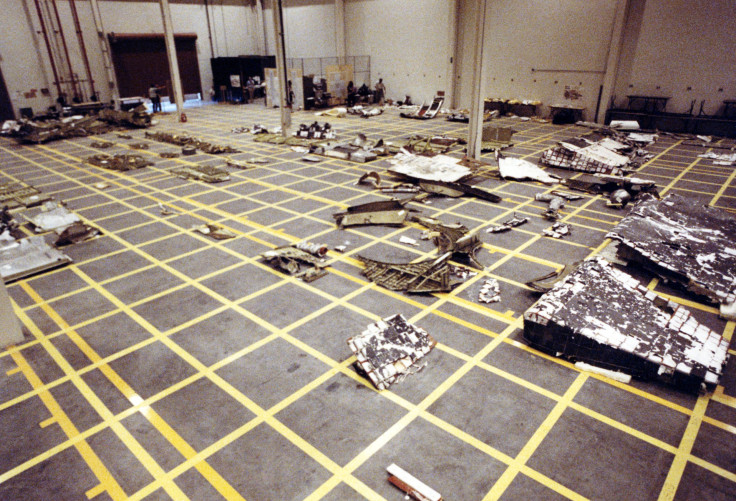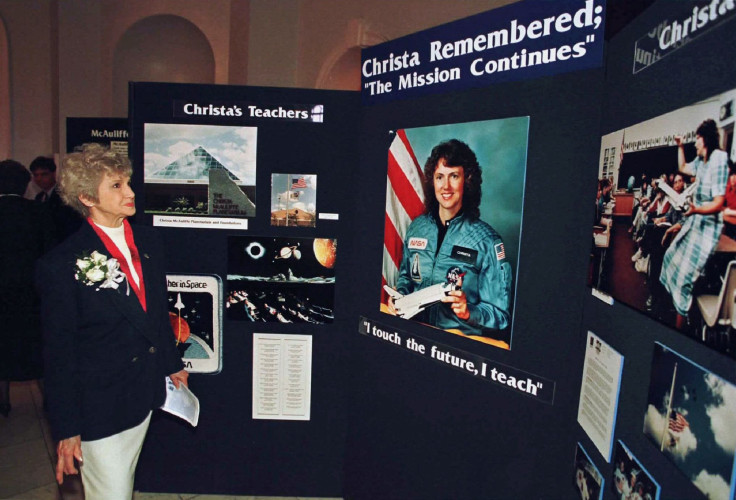Space Shuttle Challenger Explosion: On 30th Anniversary, Facts And Photos Of Fatal Disaster

Thirty years ago Thursday, the space shuttle Challenger lifted off from the Kennedy Space Center in Florida with seven people on board. It was 11:39 a.m. About 70 seconds later, at 11:40 a.m. Jan. 28, 1986, the craft broke apart, killing its passengers and sprinkling debris over the Atlantic Ocean.
"Today is a day for mourning and remembering," then-President Ronald Reagan said in a 5 p.m. speech at the White House. "We've never had a tragedy like this. And perhaps we've forgotten the courage it took for the crew of the shuttle; but they, the Challenger Seven, were aware of the dangers, but overcame them and did their jobs brilliantly."
The Challenger crew included five astronauts: Michael Smith, Dick Scobee, Judith Resnik, Ronald McNair, Ellison Onizuka. They were joined by two payload specialists: Gregory Jarvis and Christa McAuliffe, the latter of whom was a teacher chosen to lead NASA's Teacher In Space Project.
"I don't think this will deter anybody," Alan Bean, the fourth man to walk on the moon, told United Press International in 1986. "Astronauts with the program now are shocked and saddened, but I am sure they are going to put their minds to trying to find out what happened and put their minds back to the exploration of space."

The success of the space program in the wake of the Challenger tragedy depends upon who you're talking to, as some suggest the program never recovered. Three decades later, here are some facts about the disaster:
- The disaster was blamed on the failure of an O-ring seal on one of the shuttle's rocket boosters. The seal couldn't keep hot gas from leaking as designed due to cold weather. "As the chemicals mixed, they ignited to create a giant fireball thousands of feet in the air," according to National Geographic.
- An investigation into the incident found that the people who made the decision to launch the Challenger that day weren't aware, as others were, of issues with the O-rings.
- At least two engineers, Roger Boisjoly and Allan J. McDonald, tried to persuade higher-ups to cancel the mission beforehand.

- The crew members could not have escaped upon realizing something was wrong, according to Space.com.
- About 17 percent of Americans were said to be watching the Challenger launch on TV when it disintegrated.
- It was the Challenger shuttle's 10 mission. The ship had spent more than 62 total days in space, according to NASA SpaceFlight.
- When a group of government officials visited to pay their respects later in the day, Vice President George Bush gave Scobee's widow, June Scobee Rogers, his home phone number in case she wanted to talk, according to CBS News.

- The fiscal year budget that followed the explosion called for a 76 percent increase in NASA funding, UPI reported. NASA itself stopped space shuttle launches for about three years afterward.
- The first flight after the tragedy was on Sept. 29, 1988. The entire crew was comprised of veteran astronauts.
- The Challenger disaster is often linked with the Columbia tragedy of 2003. The Columbia broke up on its return to Earth when a piece of foam hit its wing and killed the seven people on board.
- Barbara Morgan, who was McAuliffe's backup, eventually made it to space in 2007. "I thought it was really important that our young people see adults doing the right thing," she later said. "And that is figuring out what went wrong, figuring out what we did wrong, and doing all we could to fix it and make it better and make the future open for them."

© Copyright IBTimes 2024. All rights reserved.












